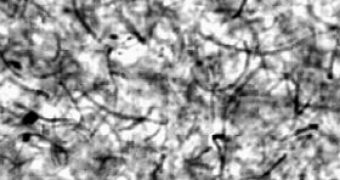Only one thing comes to my mind when talking about carbon nanotube electrical properties, conductive transparent polymer plastics, which pretty much have a wide range of applications, especially in the manufacturing process of solar cells. It seems that the conductivity of a carbon nanotube additive can be changed relatively easily, turning it from conductor to insulator just by modifying the flow of the polymer.
It turns out that a couple of researchers from the National Institute of Standards and Technology, NIST for short, were able to change the electrical properties of a carbon nanotube composite material by tunning the carbon nanotube concentration. The conductivity and dielectric properties of the carbon nanotube-polymer mixture vary dramatically when the polymer flows at a specific rate. A too high flow rate, or a stop in the flow, determines the composite to return to its previous conductive state. Only a one percent variation in the mass of the carbon nanutubes concentration can change the electrical properties of the polymer by orders of magnitude.
Carbon nanotubes represent microscopic graphite structures shaped in the form of hollow cylinders and have an extremely long list of possible applications, ranging from conductive plastic bags to transparent electrodes, sensors, paints, all the way to aircraft components.
By measuring the flow of the polymers material, with a heavily modified rheometer, instrument usually used to measure liquid viscosities, NIST scientists were able to correlate the flow rate with the conductivity and dielectric properties experienced by the carbon nanotubes, changing it from conductor to insulator, just by varying the speed of the flow. As soon as the polymer stops flowing, the composite returns to its original state. Furthermore, NIST scientists even proposed a model for the phenomenon, constructed on the basis of the measurements, which predicts the conductor-insulator transition in order to optimize and control the properties of the future polymer nanutubes composite materials.

 14 DAY TRIAL //
14 DAY TRIAL //